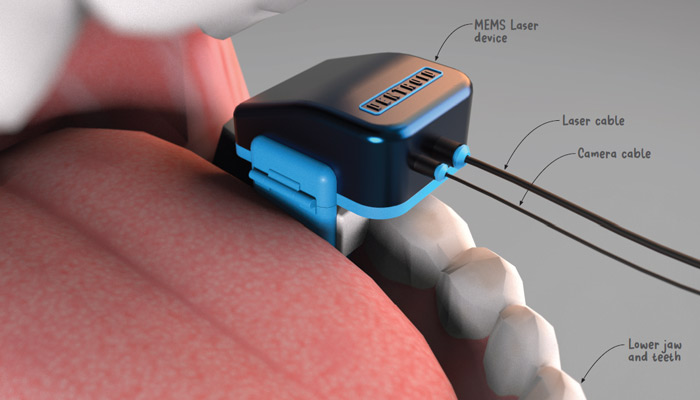[ORIGINALLY APPEARED IN MDNEXT Q4-2022]
Dentists have long complained of neck, shoulder and back pain. The reality is that despite advances in imaging and surgical procedures, the core activity of cavity removal still relies on handheld drills and line-of-sight procedures.
A patent and 14 months later, Dentroid was born. The dentist is Omar Zuaiter and the engineer is Alaa Habeb and both are from Australia. Dentroid (previously Emudent Technologies) is on a mission to remove barriers to quality oral health and to make dental treatment a kinder and smoother experience for dental professionals as well as their patients.
The device replaces rotary drills with a minimally invasive, laser-enabled intra-oral robotic attachment. The company leads with a novel type of laser that is unique in its ability to perform hard tissue cutting (ablation) without requiring intra-oral irrigation.
Not only does this mean an ergonomic and posture-friendly mode of operation, but also an unprecedented level of visual clarity while in operation. And the lasers are so gentle that they don’t need local anaesthetic in the majority of cases—a huge win for needle-phobic patients.
The small device packs a powerful camera, image analysis algorithms, artificial intelligence and networking capabilities. Unlike other robot systems the device sits directly on the teeth under treatment and the laser drill requires no moving parts. The stable platform and unequalled visibility assists dentists in making accurate diagnostic and surgical decisions in real time. There is less need for radiographs, and errors could be significantly intercepted. Record filing and tracking is streamlined offering an extra layer of prevention and protection from medico-legal issues.
Dentroid possesses an expansive IP profile which includes Australia, the United States, EU, Japan and has recently tested its advanced prototype. Results exceeded expectations and were featured in the textbook “Principles and Practice of Laser Dentistry” (NY, US) as well as in peer-reviewed journals such as Biomedical Optics Express and Frontiers in Dental Medicine. Management is targeting to be in-market by late 2024.






